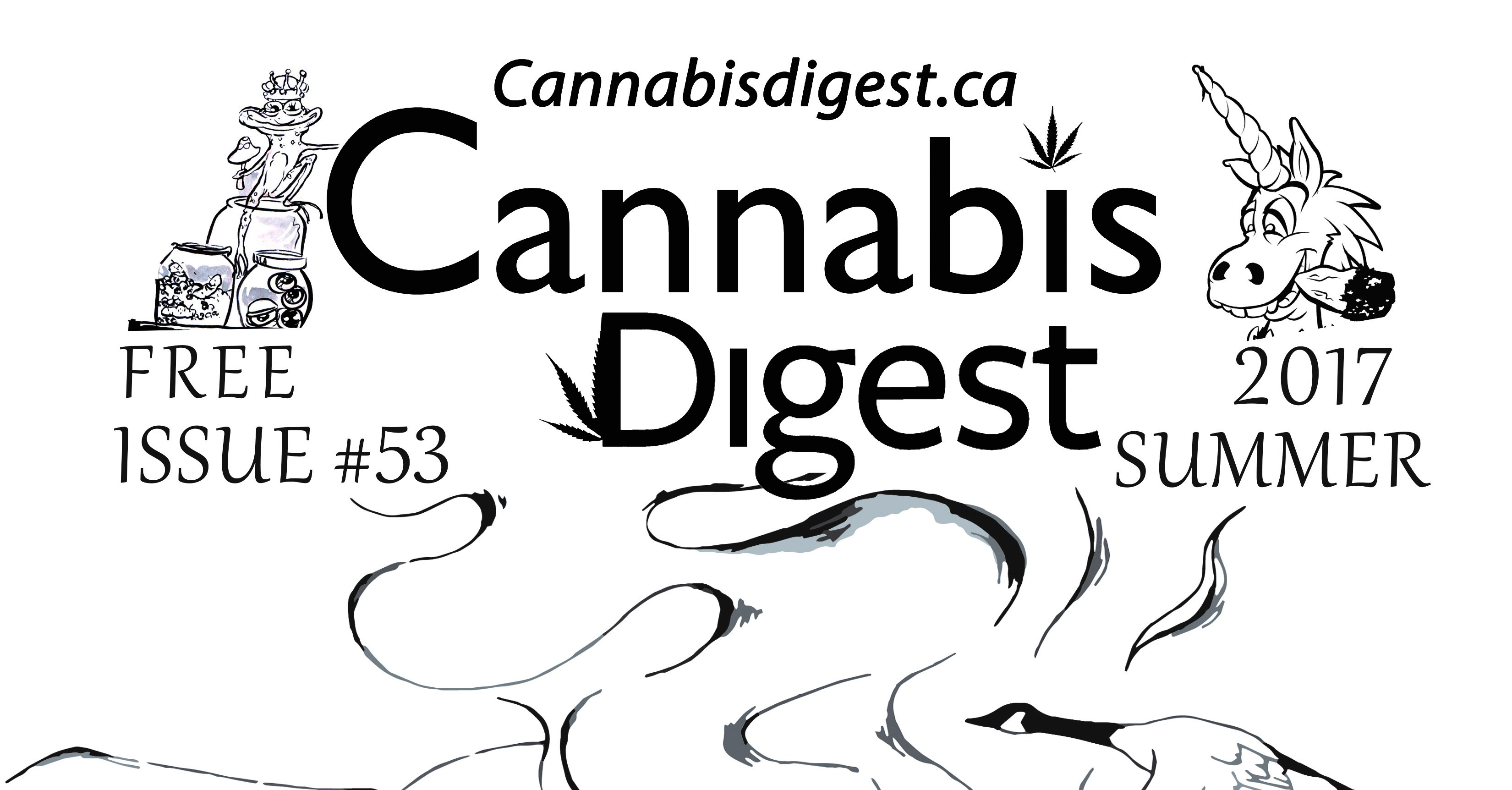By Ted Smith
Research acknowledging the benefits of compassion clubs over the legal medical cannabis program and the stark, negative consequences of legalization have been recently published in the Harm Reduction Journal. In the study, Marilou Gagnon and Heather Hobbs explain how compassion clubs have practiced harm reduction for decades, yet they have been left out of academic discussions of harm reduction and out of the new legal framework. By documenting the various benefits witnessed in the non-profit distribution of medical cannabis, this analysis highlights the profound loss experienced in B.C. after almost all long-standing clubs closed down after legalization.
The report builds on the premises that “(1) ‘cannabis harm reduction’ is not new and that it predates the current toxic drug supply crisis, (2) that ‘cannabis harm reduction’ has been practiced in community for decades, developed by people with lived experience, and championed by compassion clubs and medical dispensaries that not only provided low-threshold access to medical cannabis but also worked together to develop guidelines for community-based distribution of medical cannabis that incorporated harm reduction principles, (3) that conceptualizing ‘cannabis harm reduction’ based on the substitution effect of cannabis is too narrow in focus, and finally (4) that turning to cannabis compassion clubs and medical dispensaries to understand how ‘cannabis harm reduction’ was practiced before cannabis legalization is imperative to resist epistemic erasure.” Pg 3
For members of the Victoria Cannabis Buyers Club, this study provides solid evidence to support our arguments for a temporary exemption to the Cannabis Act. Packed with powerful quotes from participants, “Conceptualizing ‘cannabis harm reduction’: lessons learned from cannabis compassion clubs and medical dispensaries in British Columbia, Canada.”, recognizes the role these organizations play in reducing the harms of drug use and drug policies. Addressing the gaping hole left behind when storefront medical dispensaries closed across the province after 2018, Gagnon and Hobbs have redefined the role of compassion clubs from the traditional framework of being substitution projects or medical facilities into the more accurate and compelling framework of being a harm reduction service.
https://harmreductionjournal.biomedcentral.com/articles/10.1186/s12954-025-01199-8

Prohibition caused many unintended problems, for patients in particular.
”People wanting to medicate with cannabis faced several intersecting risks while also managing their own symptoms, treatments, complex illnesses, and in many instances, nearing end of life. We identified five categories of risks: (1) physical risks (e.g., consuming contaminated cannabis), (2) psychological risks (e.g., stress of trying to secure access to cannabis), (3) economic risks (e.g., exploitative practices), (4) social risks (e.g., stigma and discrimination in the context of health care, housing, employment, childcare), and (4) legal risks (e.g., facing criminal charges and imprisonment).” Pg 10
Out of the depths of the AIDS crisis in the 1990s, a new approach took root.
“Operating in plain sight and in a grey legal area for decades prior to cannabis legalization, cannabis compassion clubs and medical dispensaries in British Columbia (Canada) knew that they were doing meaningful harm reduction work and operating according to harm reduction principles.” Pg 2
“In a study conducted by Belle-Isle and colleagues, for example, 70% of participants residing in British Columbia reported accessing cannabis at cannabis compassion clubs and/or medical dispensaries compared to 2% who reported accessing through the medical cannabis program.” Pg 7
“As such, accessing a safer supply of medical cannabis (i.e., cannabis grown, prepared, dosed, and priced for therapeutic use) via cannabis compassion clubs and medical dispensaries had made medicating safer for participants (e.g., less risks of adverse effects, more effective symptom relief, etc.). It had also allowed them to make more informed decision about the products they used and dosage.” Pg 14

“Participants commented on the importance of being able to interact with products in order to determine their quality, something that was not possible with the illegal recreational market and the medical cannabis program. The mail-order feature of the medical cannabis program, in particular, posed a quality challenge.” Pg 16
For those suffering from chronic medical conditions, using cannabis every day is risky and expensive. Living on a fixed income forces many patients to literally choose between food and cannabis. “Having to pay out of pocket for cannabis put participants in a bind: pay for a safer medicine (i.e., cannabis) or take prescription medications that are medically covered (primarily opioids).” Pg 15
“Participants with operational experience explained that cannabis compassion clubs and medical dispensaries were often places of last resort for people in need, including people who did not have access to care, people with unmanaged or poorly managed pain, and people who were dying.” Pg 18

“Consumption spaces were needed for different reasons. First, being able to consume somewhere inside and somewhere safe was important in the context of medical cannabis. Smoking, in particular, was challenging for people experiencing homelessness, renters at risk of eviction, and people living with disabilities. Second, being able to access and stay in a space where people consume was essential to create conditions that encouraged slower and safer consumption (as a form of harm reduction). Third, being able to share knowledge and experiences was central to building community and solidarity.” Pg 23
These non-profit societies are typically staffed by patients with lived experience of learning how to use cannabis as medicine. Since using cannabis as a medicine is a unique experience, giving patients an opportunity to share information in a comfortable setting results in better health care outcomes. Instead of relying on a medical professional with no real experience with cannabis, compassion clubs thrived by employing patients who enjoy teaching others how to improve their lives with the herb, as they have done for themselves.
Compassion clubs are seen to be superior to the federal mail order program because they include “(1) spending time with people to assess their situation, identify their needs, discuss options, provide information, answer questions, listen to concerns, etc., (2) valuing lived experience as a source of knowledge, expertise, and strength, (3) empowering people to make decisions about their health and determine what works for them, (4) prioritizing quality of life and understanding what matters to people, and finally (5) remaining flexible and comfortable with the “grey” because situations changes, needs fluctuate, priorities shift, and cannabis can help the same person in different ways at different times for different products.” Pg 18

In the initial attempts to frame the distribution of cannabis to patients in a positive light, phrases like medical marijuana and substitution projects have been used by advocates, researchers and the media to distinguish from recreational sales.
“Storefront access, safer and consistent supply, therapeutic dosage, and compassionate pricing are paramount for people medicating with cannabis and, in turn, for harm reduction.” Pg 25
“Cannabis is notably absent from the conceptual literature on harm reduction.” Pg 5
‘Harm reduction did not originate in academic spaces and the most important conceptual strides have been made in communities, within the larger context of what Hassan describes as “revolutionary organizing”, and through the collective power of people keeping each other alive, safe, and well while getting to the root causes of so-called “drug-related harms”.’ Pg 4
Clearly, ‘“…harm reduction applies to more than drug use”. As such, it brings into focus the fact that the same drug used by two different people with different mindsets and in two different settings will be experienced differently. Intervening at the level of the mindset (e.g., helping someone feel less scared or alone) and the setting (e.g., creating a safer consumption environment through safer consumption spaces, safer public bathroom protocols, virtual witnessed consumption, etc.) can therefore help change the drug experience and its outcomes.’ Pg 5

”‘Harm reduction’ was not a central organizing concept in advocacy efforts to decriminalize personal possession for people who self-medicated with cannabis, legitimize and regulate cannabis for therapeutic purposes, normalize the prescription of cannabis in the health care system in the hopes that it would eventually achieve the same status (and coverage) as pharmaceuticals, and finally legalize cannabis altogether.” Pg 2
“In harm reduction research, practice and advocacy, cannabis has been mostly discussed through the concept of ‘substitution’.” Pg 3
”‘Cannabis harm reduction’ has been primarily conceptualized through the lens of ‘cannabis substitution’ and research has been aimed at understanding substitution practices, exploring the motivations and experiences of people who engage in these practices, and documenting self-reported (subjective) benefits as well as measurable (objective) outcomes of substitution (e.g., reduce cravings, relieve pain, prevent unpleasant side effects, manage withdrawal symptoms, decrease substance use and associated health risks such as overdosing, etc.).” Pg 3
Despite all of the benefits compassion clubs offered, there was no opportunity for them to be involved in the new legal scheme when it came into effect in 2018. Threats, raids and fines forced most non-compliant storefront operations down in urban centers, though a flourishing network of dispensaries operating on First Nations reserves across Canada have been growing in their absence.

“Legalization removed the grey area that characterized grassroots medical cannabis and consequently, removed a structurally significant layer of harm reduction work done by compassion clubs and medical dispensaries to mitigate the risks of the toxic drug supply in British Columbia, for example.” Pg 11
“The way cannabis legalization has unfolded in Canada raises numerous social justice issues, including but not limited to, the near complete eradication of pre-existing peer-based, participatory, non-profit cannabis supply models and exclusion of these models from the Cannabis Act, the dismantlement of a highly organized network of socially-oriented organizations and people with lived experience, and the profound access loss experienced by people who medicate with cannabis.” Pg 25
“As noted above, we believe that there is a real risk of epistemic erasure with the loss of cannabis compassion clubs and medical dispensaries in British Columbia. And while the Victoria Cannabis Buyers Club (VCBC) and The Medicinal Cannabis Dispensary (TMCD) continue to operate at this time and resist enforcement measures (including by taken legal actions), it is important to document what made cannabis compassion clubs and medical dispensaries so effective, impactful and innovative before legalization.” Pg 26
Cannabis as a harm reduction tool has always been a central theme behind compassion clubs, though it has usually been framed as a medical or substitution product. By viewing the activities of compassion clubs through a harm reduction lens, this study brings cannabis into the larger discussion of drug use and illustrates how it can help mitigate the opiate crisis. While the general public ignorantly believes that legalization made all of the problems with medical cannabis disappear, this research documents the harsh effect it has had on patients and the communities that once supported them.




